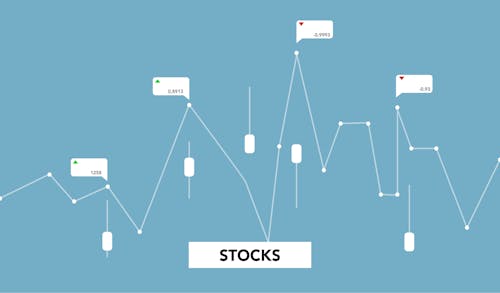S&P 500 Analysis: U.S. Stocks Wobble Amid Tech Sell-Off

Image Source: Pexels
Technology stocks were leading the sell-off on Wall Street shortly after the open, following a very weak handover from China overnight and lackluster trade during the European hours. Apple shares we leading the falls in the sector with a loss of more than 3% on the session, falling sharply for the second day, amid concerns that China will broaden its iPhone ban.
S&P 500 analysis: Higher for longer narrative hurt stocks
Apple concerns aside, sentiment was already downbeat due to weak economic growth in China and the eurozone, as well as fears that interest rates will remain high for longer in the US. Ironically, the ‘higher for longer’ narrative is not finding renewed support by inflation signals, but by signs of economic resilience. Following a strong ISM PMI report on Wednesday, we had better-than-expected jobless claims data today.
With government bonds offering high yields, many investors are finding it difficult to justify holding growth stocks with stretched valuations on Wall Street. Yet, given the past strength of the stock market this year, despite surging interest rates and other concerns, investors are also not in a panic mode yet as this phase of the weakness could also turn out to be temporary.
Meanwhile, investors are also concerned that the renewed strength in crude oil prices amid the Saudi-led OPEC supply cuts, could give rise to another round of inflation and keep bond yields underpinned as a result. That in turn could hurt growth stocks and weigh on tech-heavy indices like the Nasdaq and S&P 500.
Trend of soft data from Eurozone and China continue
Another day, another set of disappointing data from the Eurozone caused the EUR/USD to drop below 1.0700 erlier. This time, German industrial production came in at -0.8% month-over-month versus -0.4% expected and -1.5% last, adding to a growing list of data misses of late for the Eurozone’s largest economy. From the Eurozone as a whole, the news was not good either as GDP was unexpectedly revised to show a modest 0.1% quarter-over-quarter ‘growth’ compared to initial estimates of 0.3%. The day before, we saw German factory orders come in at -11.7% for July, more than losing the +7.6% gain in the previous month. The outlook for Germany industrial output doesn’t look great, given that last week the manufacturing PMI fell to 39.1 in August, marking the second-lowest reading since May 2020 and highlighting the extent of the weakness in the sector. In a clear sign of a struggling consumer, Eurozone retail sales have either fallen or stagnated in each of the past 6 months. After falling 0.3% in June, sales fell by an additional 0.2% in July, as we found out yesterday, once again disappointing expectations.
Meanwhile, China's trade data was not as bad as expected, although with exports declining 8.8% and imports falling 7.3% year over year, adding to their sharp falls from the month before, unsurprisingly this failed to offer much support to Asian markets overnight. China’s services PMI slumped to its slowest pace of growth in eight months, according to the private Caixin survey released the day before.
Against a backdrop of weakening Eurozone and Chinese data, and concerns that interest rates will remain high for longer in the US, is what is keeping the bulls on the sidelines for now.
S&P 500 analysis: technical outlook
(Click on image to enlarge)

The bullish trend line that had been in place since March broke down in mid-August. Since then, the S&P has been stuck inside a range, with both the bulls and bears having turns in control the short-term price action. On Friday of last week, the S&P gave us a bearish signal in that it formed a doji candle underneath that broken trend line. Since then, it has fallen every single day. While the market may now be a little oversold in the short-term outlook, it appears as though the market is struggling to find any many reasons to buy this latest dip. So, we could see an even larger correction, before the market potentially bottoms.
The bears will be eyeing the break down of further support levels to trigger follow-up technical selling. Short-term support around 4427-4430 area was being tested at the time of writing. If the index breaks decisively below this level then things could get interesting, particularly if it also goes on to take out the last low that was made about two weeks ago at 4356. If that level is broken, we will have a lower low in place, which should further encourage the bears to step in and the drive the market even lower.
On the upside, the first line of defense for the sellers come in around 4470/73, which also happens to be where the 21-day exponential average comes into play. Thereafter, 4500 is the next upside target for the bulls.
Overall, the market looks far from convincing for either the bulls or bears, but the latter group appears to be having the upper hand. For that reason, the bulls should proceed with extra care.
More By This Author:
Stocks Face Risk Of Further Falls
Nasdaq 100 Outlook: Stocks Slip As Strong ISM Data Boosts Rate Hike Speculation
Euro To US Dollar Analysis: EUR/USD Set To Lose 2023 Gains
Disclaimer: The information on this web site is not targeted at the general public of any particular country. It is not intended for distribution to residents in any country where such ...
more


